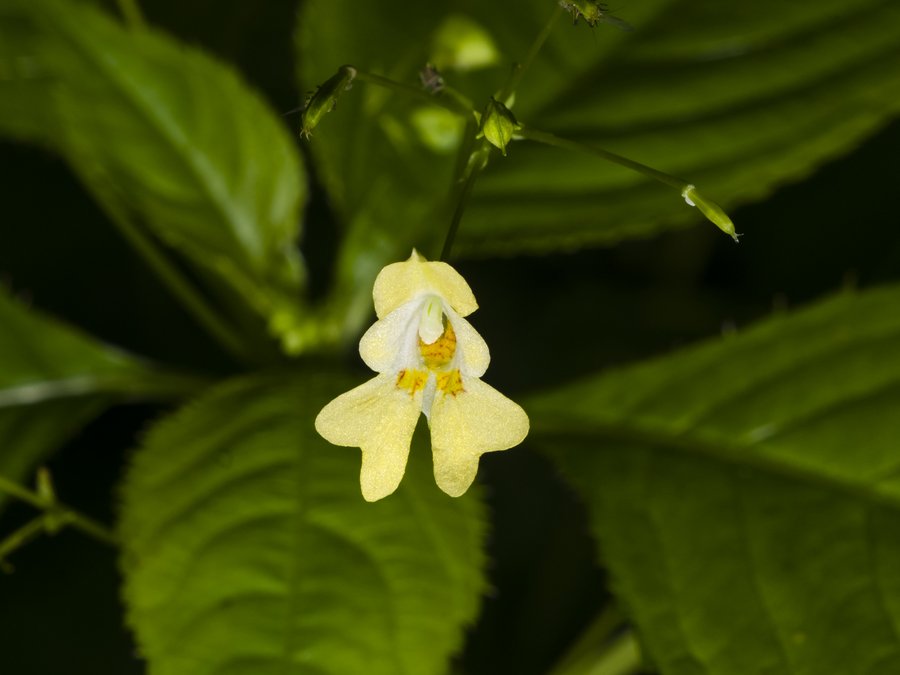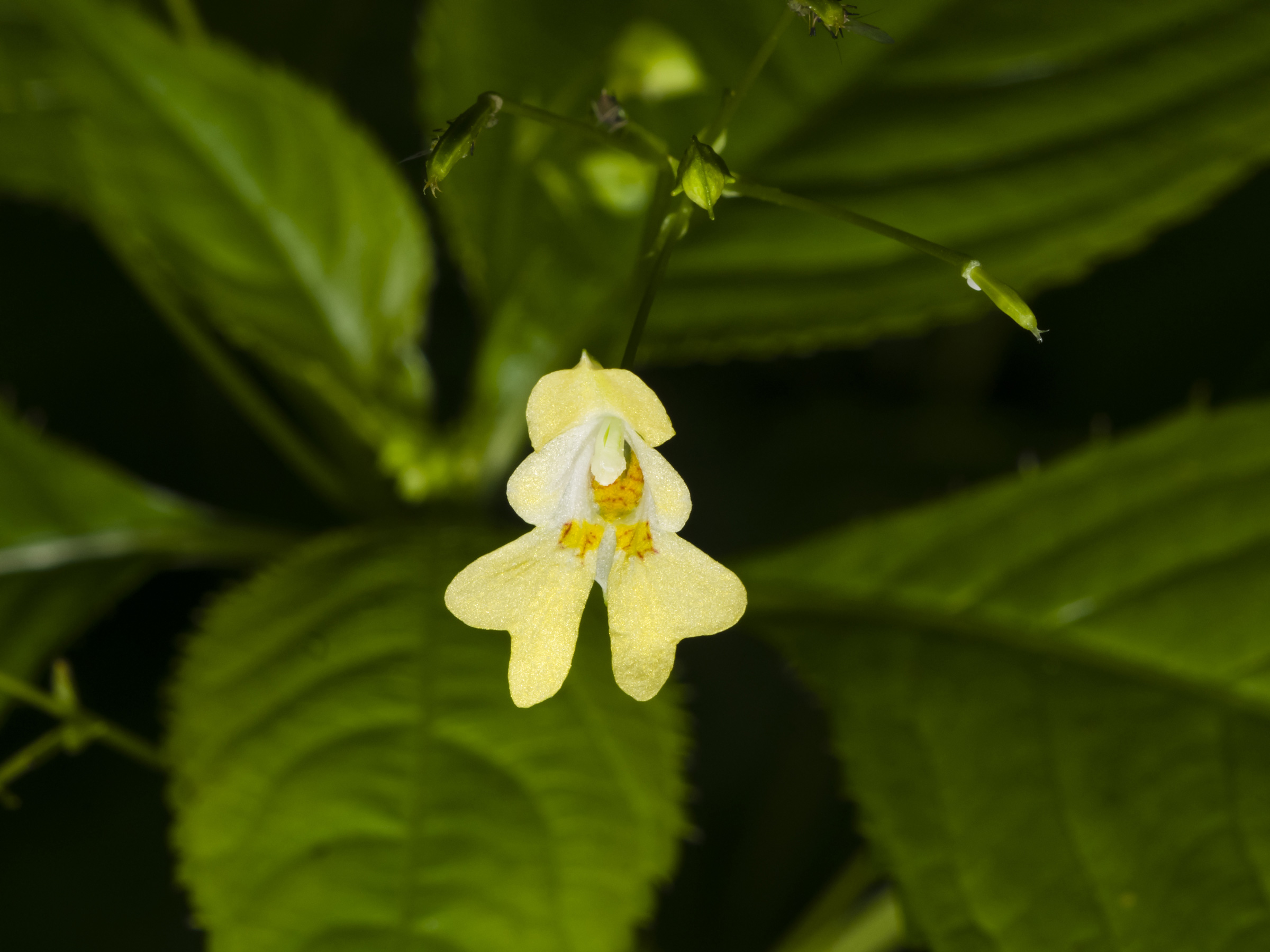Only the small balsam or small-flowered touch-me-not (Impatiens parviflora) from eastern Siberia and Mongolia was found in amounts worth mentioning. It occurs on 3 % of the forest area with at least a 10% degree of coverage. The species is most common in Mecklenburg-Vorpommern, where it occurs on a little less than 9 % of the forest area. Extensive incidences grow in the forests of Germany primarily on sites that do not offer good living conditions for other species, for example because they are too dark or their layers of leaf litter are too high.
The National Forest Inventory recorded the following other invasive species: giant hogweed (Heracleum mantegazzianum), giant knotweed (Fallopia japanica, F. sachalinensis), Policeman's Helmet (Impatiens glandulifera), American pokeweed (Phytolacca americana). They hardly occur in the forest, however.
While invasive herbaceous plant species are not significant area-wise in the forest, one invasive woody species is notable: the black cherry (Prunus serotina). It takes up approximately 104,000 hectares of the young forest cover and can impede the regeneration of native forest tree species. Its vigour is, however, inferior to that of our forest trees and remains in the understorey, forming the main stand on less than 11,000 hectares or approx. 0.1 % of the total forest area.

